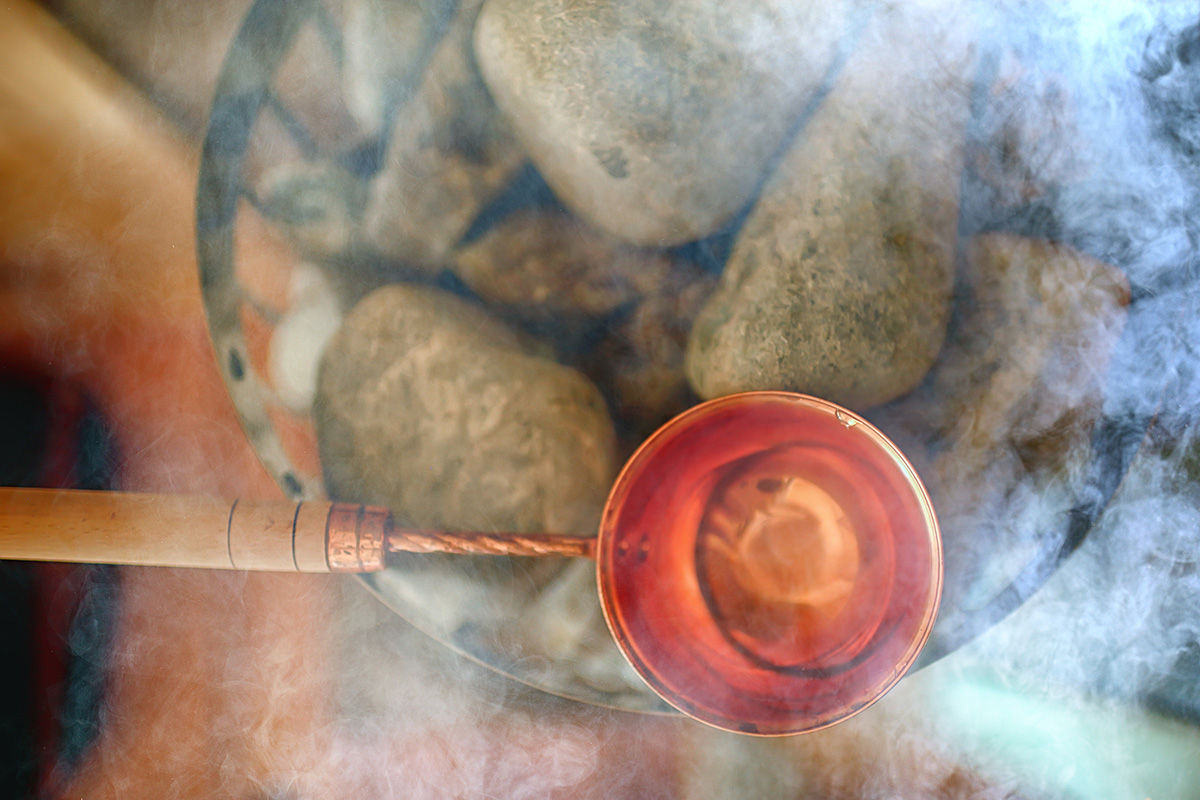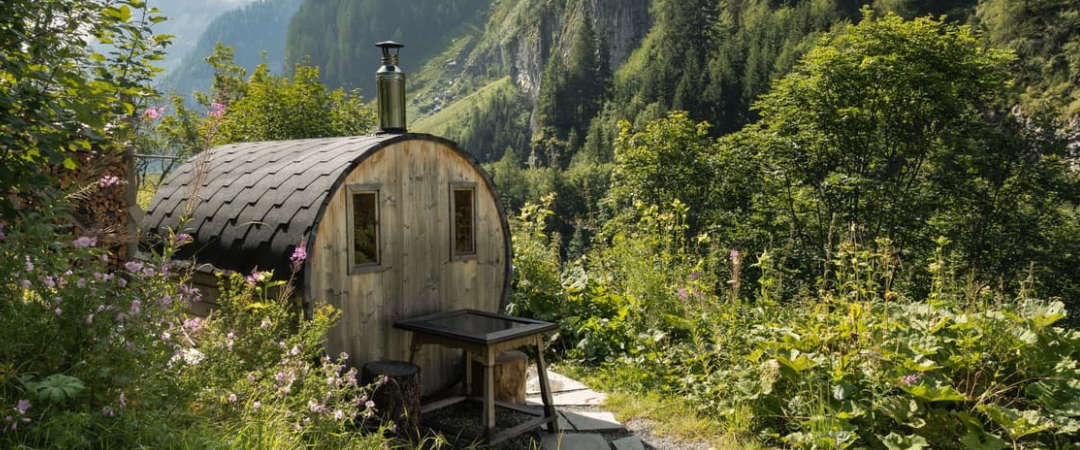By Emily Edmonds
We’re continuing this series on cold and flu symptom relief as we continue to experience this difficult season of respiratory infections that are rampant right now. The rainy weather is doing more to keep us all indoors, which increases the risk of exposure to illness. If you’re experiencing a cold, the flu or COVID and you are looking for relief until you can come out of quarantine, this article is for you. If you are healthy and you want to learn more about how to enhance your immune system, this article is also for you.
Please note that this article is not a substitute for medical advice, nor is it intended to replace medical advice regarding vaccinations or medications. This article is intended for wellness and well-being and as a supplement to medical interventions.
Sauna Therapy

Sauna therapy has been in existence for thousands of years, across many different cultures around the world. The ancient Romans used sauna therapy followed by cold plunge on a regular basis to strengthen their soldiers and for injury recovery. The ancient Romans left this tradition behind for others to follow. After the Turks conquered Constantinople in 1453, they adopted this Roman tradition learned from the Byzantines called the Hammam (and if you’ve never tried it, you’re in for a treat!). The Russians have a sauna culture as well called the “banya” which translates to “bath”. The Japanese also have a sauna and bathing culture as well. Scandinavian cultures have been practicing sauna therapy since the time of the Vikings.
Sweat is one of the pathways through which our bodies move toxins out of the body. Sauna therapy relaxes the muscles and assists with their recovery, increases blood circulation, induces sweating, increases growth hormone, and strengthens the immune response via improving white blood cell count, lymphocytes, neutrophils and basophils. It also improves sleep, reduces joint pain, improve lymph drainage and improves skin health. Sauna therapy is one of the best wellness tools in my toolbox for chills and body aches that occur during a cold or flu virus.
There are several different types of saunas, and it can get confusing which one is best to try and when. Most of the sauna that we will be focusing on are the dry saunas. Here are some of the different types and some guidelines to each. First, let us go over some pre-cautions to sauna therapy.
Precautions to Sauna Therapy:
- Please consult with your physician prior to starting sauna therapy. I would recommend caution for the following conditions:
- Pregnant or trying to conceive – avoid
- Heart Disease or High Blood Pressure – consult with your physician prior to sauna therapy
- Atrial Fibrillation – avoid
- Low Blood Pressure – avoid or use with caution, consult with a physician
- Anemia – avoid or use with caution, consult with a physician
- After COVID or Flu vaccination – wait two weeks after your last dose before doing sauna therapy.
Sauna Types:
Finnish Sauna
This is the most traditional type available, and usually involves a heater or wood stove and uses radiant heat. You will also find a wooden bucket of water with a ladle in it and some hot rocks on top of the heater that you can use to produce steam for a wet bath type experience and to make the sauna hotter. While I really like these saunas, they can be too overwhelming for people who are sensitive to heat and take a long time to get used to! If you use these saunas, it is super important to be hydrated prior to going in and afterward.
FAR Infrared Sauna
I prefer using these types b/c the heat isn’t as intense as the traditional Finnish dry sauna. These types of saunas use FAR Infrared heat, which operates at a different wavelength than radiant heat. The FAR infrared heat penetrates the skin deeper and is better for deep muscle aches or joint pain. They are also easier to use and set up, you can buy infrared saunas for indoor use without the need for additional ventilation. I have found that with the FAR infrared sauna that it takes a little longer for sweating to begin, but with the same amount of sweating as the Finnish Sauna. If you have trouble with the heat and you want to try sauna therapy, this would probably be the best type to start with.
Wet Sauna or Steam Sauna

These types of saunas are also called Steam rooms. These saunas use steam primarily and do not get as hot as the dry saunas. It’s a bit hard to tell while in a steam sauna if there is more sweating that is occurring or condensation from the humidity of the steam. So for this reason, I often use a steam sauna after a dry sauna session. Nonetheless, steam saunas can be excellent for chronic respiratory conditions post COVID and flu. Steam saunas can also be good for those who struggle with the dry heat of dry sauna therapy.
If you don’t have access to a steam sauna, you can substitute by using a humidifier or a bowl of hot water and putting your face over it while inhaling the steam. I also like to use a drop or two of eucalyptus and tea tree oil in the water.
Sauna Procedure
My sauna process is something I consider to be sacred. I have developed it over the last ten years into a ritual that I began to practice years ago and have refined it over time. It’s hard to explain the feeling of getting a sauna bath instead of simply taking a shower or water bath daily. It’s a much deeper, cleaner experience than what happens on the surface of the skin when we take a shower.
My sauna ritual consists of the following:
First, I drink a liter of water with an electrolyte tablets, or, a liter of celery juice. I use a sauna blanket that I bought off of Higher Dose during the pandemic. They make EMF free FAR infrared sauna blankets that you can use in tight spaces fairly easily. The only problem with these types of saunas is that you have to be fully clothed to use these, so if you have one make sure you are wearing organic cotton or bamboo clothing that is undyed if possible. Higher Dose now also sells blanket liners that can go into them that do not require this.
Pre-heat the sauna and line it with a towel. I really like the Turkish towels the best. Then, use a dry skin brush in a circular motion around the entire body prior to going into the shower and clean the skin with soap and water. Exfoliating brushes and a back scrubber work best for this, using the same motions as the dry skin brush. Rinse off in the shower and dry thoroughly.
Make sure to use the bathroom if needed before going into the sauna.
Go into the sauna and rest until you start to feel a sweat. When I notice myself start to sweat, I set a timer for 10-12 minutes. By the end of your sauna session, your body should be dripping with sweat. Immediately take a shower afterward, and use water that is as cold as you can stand it. When you’re first trying it or haven’t done it for awhile, use lukewarm temperature water. You can wash with soap and water if you wish, but you can also just rinse off thoroughly. As a general rule of thumb, I like to stay in the cold shower for at least half the amount of time it took after I started to sweat. So if it takes 10 minutes for a thorough sweat to develop, you want to stay in the shower for at least 5 minutes.
When you are finished with your sauna and shower, drink another liter of water with electrolyte tablets or a freshly pressed vegetable juice or celery juice. Most of the issues with sauna therapy arise b/c of improper hydration! So please make sure you are adequately hydrated before and after your sauna session. You can take another dry sauna after this or do a wet sauna and repeat the same procedure.
For the wet sauna, I typically only spend 10-20 minutes in the steam room and I like to rest between sauna sessions for about 20 minutes before repeating a sauna to give my core body temperature time to come back down.
If you are finding yourself feeling like you are coming down with a cold and not sweating at all, try to sweat if you can. If you don’t have a sauna, you can accomplish this by taking a really hot shower, wrapping yourself with a very warm blanket, or by sitting in a hot bath. Finish by taking a cool shower. If you’re having trouble sweating, drink some tea made with cinnamon first. The cinnamon twigs are best, but cinnamon bark (the kind you get at the supermarket) will work okay, too. You can also drink some mint tea with cilantro as well.
Dry Skin Brushing
Dry skin brushing is really helpful for congested lymph nodes and body aches. I mentioned doing a round of dry skin brushing prior to taking a sauna, I like doing this b/c both sauna therapy and dry skin brushing improve lymphatic system flow. The lymphatic system is very important to the immune system, it stores macrophages and waste products generated while the immune system is fighting an infection. The lymphatic system is a circulatory process in our body that operates by drainage rather than by a pumping mechanism like blood circulation. Encouraging lymphatic drainage by means of exercise, rebounding, gravity, sauna therapy and dry skin brushing is helpful when recovering from a cold or flu.
You can even do dry skin brushing at home if you are unable to do sauna therapy.
Do this if you are also getting swollen lymph nodes and body aches. Take a boar bristle brush and make circular movements on each of your limbs towards the direction of the heart. Make clockwise circular movements over the abdomen, lower back, and upper back.
Please do not do dry skin brushing if you have a history of breast cancer or lymphoma.

